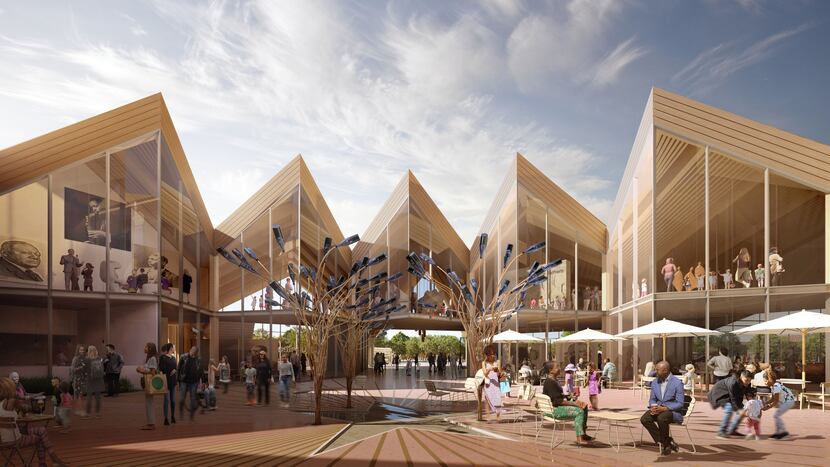A new museum is coming to Fort Worth, though you might not know it from the renderings. Last week, plans for a National Juneteenth Museum were released on that holiday, which marks the date in 1865 on which emancipation was announced in Texas. The project is the brainchild of Opal Lee, the so-called Grandmother of Juneteenth, who in 2016, and at the age of 89, walked from Fort Worth to Washington, D.C., to rally support for establishing the day as a national holiday. (It was, finally, in 2021.)
Lee, who is now a spry 95, is understandably excited about the proposed $70 million museum, which is to be built on Fort Worth’s historically Black Southside and is scheduled to open on Juneteenth in 2024. “It’s off the chain,” she told The New York Times. But the museum’s design, by BIG, the firm of Danish wunderkind Bjarke Ingels, immediately elicited skepticism in the architecture world. Why had Ingels, a white architect from Copenhagen, been selected in the first place? And then Chris Daemmrich, an advocate for racial equity in design, noted on Twitter that the skyline in the project’s initial renderings was not even Fort Worth, but a dated view of Austin. Oops.

To know the career of Ingels is to know how that kind of mistake might happen. Over the last decade, he emerged from the shadow of his mentor, the Dutch architect Rem Koolhaas, into an architectural phenomenon, his firm racking up commission after commission with an alluring, can-do attitude and the premise that every problem is a solution in disguise. In the last two months alone, BIG has won competitions for a new opera house in Prague and an airport in Zurich, announced plans for a center of gastronomy in Spain, and opened a headquarters for Google in Silicon Valley. Oh, and Ingels also found time to speak about the future of the planet at the Vatican. Is it any wonder that his firm might confuse a couple of relatively minor Texas cities?
According to its architects, the design, which features a series of asymmetrically aligned gabled halls pointing to a central courtyard (imagine: a collection of shotgun houses arranged in a doughnut shape), is a response to the vernacular residential architecture of Fort Worth. “It will have a handcrafted quality to it,” Douglass Alligood, the architect in charge of the project for BIG, told the Times. Alligood, it should be noted is Black, and BIG is partnering with Irving-based KAI Enterprises, an African-American owned firm that will serve as architect of record for the project.
If anything, the Fort Worth landmark the museum most closely resembles is Panther Hall, the demolished concert space (originally, a bowling center) made famous as a country music venue and recognizable for its roofline of staggered gables.
That would be an odd precedent for a museum celebrating emancipation, but then Fort Worth has a history of unusual architectural inspiration. The vaulted roofs of Louis Kahn’s Kimbell Museum were, it is said, derived from the barns of the adjacent Will Rogers Memorial Center.
The Kimbell is just one of Forth Worth’s exceptional works of museum architecture, and surely “Ms. Opal” and Juneteenth deserve a work that meets that exceedingly high standard. BIG, for the moment, is off to a shaky start.
CORRECTION, June 23 at 1 p.m.: This story has been updated to correct the spelling of architect Douglass Alligood’s name.

